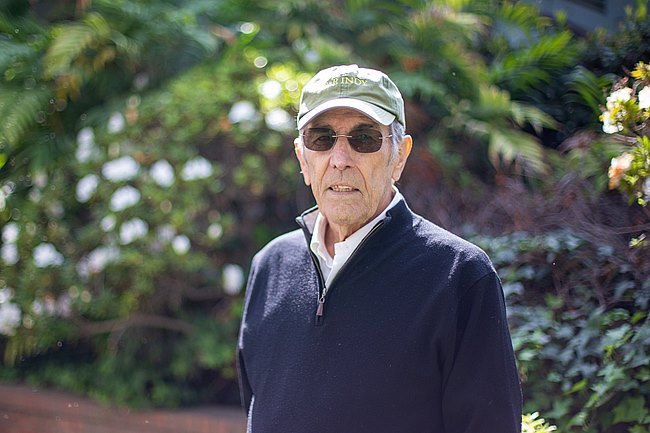
Dr. Gregory Ferraro, chairman of the California Horse Racing Board. (Zoe Metz photo)
Non-Exercise Related Deaths Up In 2022-’23 Fiscal Year
CHRB Press Release
SACRAMENTO, Calif.—California horse racing again experienced a significant decline in the number of horses that died from injuries suffered during racing and training at California facilities during the 2022-’23 fiscal year that ended June 30. A total of 26 died last year as a result of musculoskeletal injuries that occurred while racing or training, compared with 39 the previous year. For context, approximately 30,000 race starts and far in excess of 100,000 workouts occur each year from 8,000 to 10,000 horses at California Horse Racing Boardregulated facilities.
“That’s still too many fatalities, but it shows that all of the new regulations, policies, and procedures that that we’ve introduced in cooperation with the industry have had a significant effect,” said CHRB Chairman Greg Ferraro. “Our efforts are focused primarily on preventable injuries, and that’s what the numbers reflect. I don’t know of any racing jurisdiction in the country that even comes close to matching this effort or result.”
In the interest of full transparency, the CHRB also tracks fatalities caused by any non-exercise-related catastrophic injury. The most common cause of death in this other group is gastro-intestinal diseases, such as colic, colitis, and enteritis, followed by respiratory disease. Unfortunately, the number of “other” deaths increased last year, and those 43 deaths, coupled with the 26 due to musculoskeletal injuries, brought the total to 69, or three more than the 66 the previous year.
“I’ve considered several times the idea of not counting other deaths, the type that occur among horse populations anywhere in the world, including the popular riding stables and in the wild, but I’ve always decided that full transparency is the best way to go,” said CHRB executive director Scott Chaney.
Those 43 other deaths occurred despite care and treatment by on-site veterinarians and specialized equipment located in stable areas.
“Six of those horses were transported to the veterinary hospital at the University of California, Davis, as well as other local referral hospitals, where experts did their best to save them,” said Dr. Jeff Blea, the CHRB equine medical director. “Illnesses such as severe colic, advanced neurologic cases, and obscure medical conditions, sometimes just are not treatable, as animal and horse owners throughout the world know from personal experience.”
For further context, equine fatalities at CHRB-regulated facilities have declined by 54 percent since 2019, including the “other” category.



